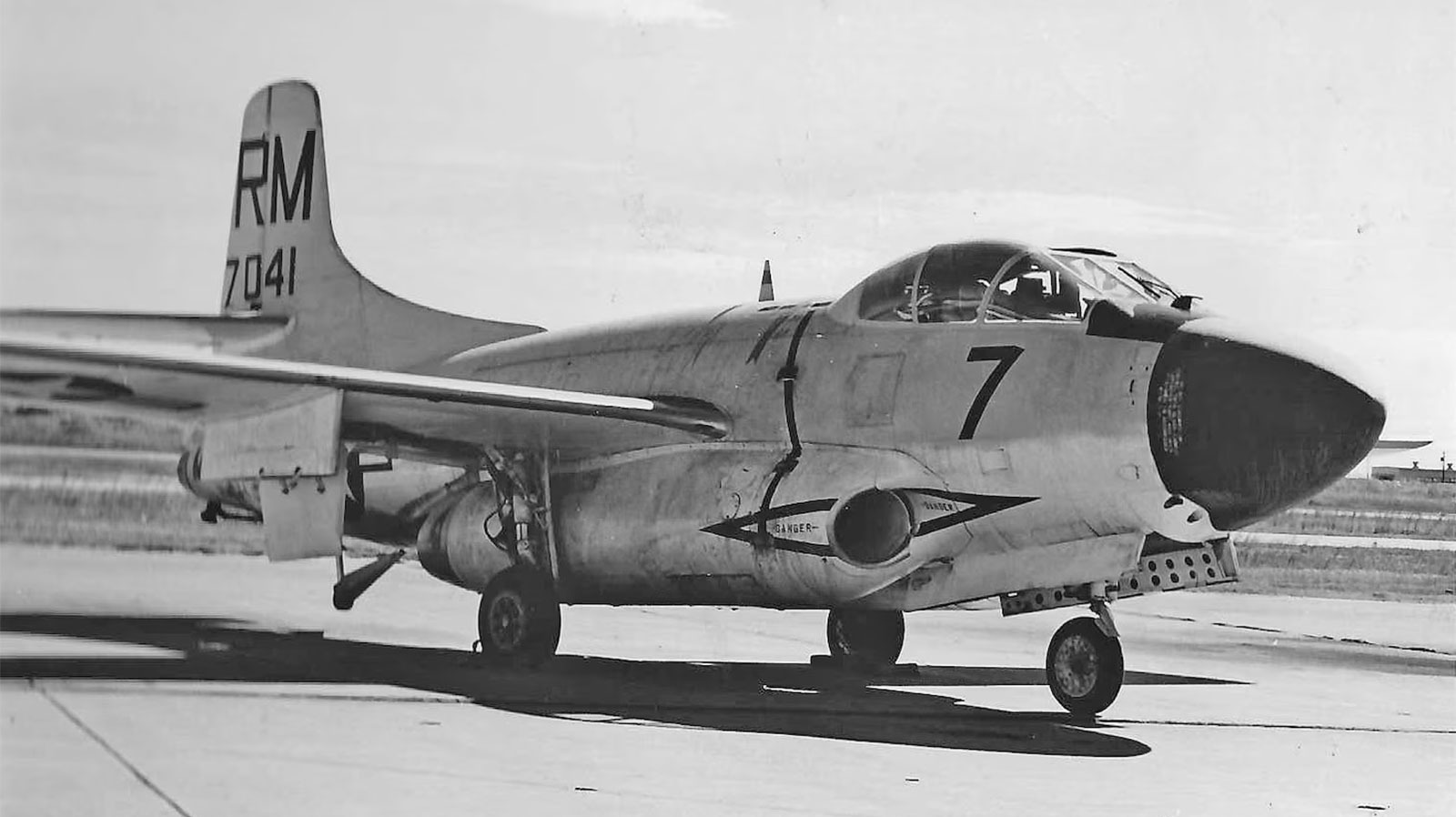
When folks picture legendary jet fighters, flashy handles such as the F-86 Sabre or MiG-15 come to mind. But out of the limelight in the annals of military aviation history, quietly maintaining its reputation is the Douglas F3D Skyknight—a clunky, slow, and unflashy jet that, however, left an indelible impression on night fighting and electronic warfare.

The Skyknight came onto the scene in the late days of World War II. In 1945, the U.S. Navy sought a night fighter capable of operating from aircraft carriers under all weather conditions. The challenge was high: the plane had to be jet-powered, carry a crew of two, be equipped with onboard radar, travel 500 mph, and fly up to 40,000 feet. Douglas Aircraft’s design team, under Ed Heineman, answered not with a trim dogfighter but with an innovative and pragmatic airframe that emphasized radar capability and cockpit coordination over maneuverability or speed.

What resulted was a broad-body, straight-winged jet, designed in the first place to accommodate a suite of radar systems and permit side-by-side seating for the pilot and radar operator. Its broad, somewhat gasbag-like profile gave it its lovingly adopted nickname “Willie the Whale.” But what the Skyknight sacrificed in appearance, it gained in performance where performance counted.

Its technical ace was its radar package, comprising search, track, and tail warning radars. This enabled the Skyknight to track and attack hostile aircraft in the dark and bad weather without needing ground controllers.

The F3D saw its first combat experience during the Korean War. Used in 1951 with Marine Night Fighter Squadron 513, the “Flying Nightmares,” the Skyknight was charged with defending USAF B-29 bombers on nighttime bombing runs over North Korea.

These missions were highly dangerous because MiG-15 interceptors could attack them, but the Skyknight’s onboard radar allowed it to fly alone and counter threats quickly. On the night of November 2, 1952, the Skyknight became history when one of its pilots achieved the first-ever nighttime jet-versus-jet kill and downed a Yak-15. When the war ended, the Skyknight had six documented kills and only one combat loss to its credit, demonstrating the merits of the design and the crew’s versatility.

With the introduction of new, speedier fighters, the Skyknight was reassigned. It’s slow speed and old airframe made it less than ideal for high-speed combat, but its spacious interior and stable platform made it ideal to modify into an electronic warfare (EW) aircraft. Thirty-five Skyknights were converted into EW versions—originally designated the F3D-2Q, later the EF-10B—equipped with jammers and electronic countermeasures.

The Cold War provided a new utility for the Skyknight. In 1962, during the Cuban Missile Crisis, these jets were used in modified form to conduct electronic reconnaissance, gathering information about Soviet radar systems. But the Vietnam War cemented the EF-10B’s worth. When the U.S. intensified bombing sorties over North Vietnam in 1965, electronic warfare was essential. The EF-10B’s role was to jam radar sites, deceive SAM operators, and lead strike planes into highly defended airspace.

Flying with Marine Composite Reconnaissance Squadron VMCJ-1 from Da Nang, the Skyknight consistently led the charge into hostile areas and was last out. Pilots overloaded their aircraft with fuel and electronic equipment, pushing through grueling flights to cover for others. What they did was not merely difficult—it was a high-risk game of chess with North Vietnamese radar teams. Direct strikes at SAM sites were routinely forbidden, so EF-10B crews had to use chaff, jamming, and innovative flying to mislead the adversary. Even with the introduction of new EW aircraft such as the EA-6A Electric Intruder, the old but reliable Skyknight lingered, conducting combat sorties until May 1970.

One of the idiosyncrasies that made the F3D unique was its escape system. Unlike the majority of jet fighters of its day, it did not feature ejection seats. Instead, pilots and crewmen had to turn their seats around, open a hatch, and slide down a tunnel under the cockpit, emerging between the jet engines. Amazingly, the escape route worked safely and effectively—and was even employed for clandestine special forces insertions, with commandos slipping out in mid-flight over enemy territory.

Outside of combat, the Skyknight was instrumental in the development of aviation. It was employed to test the first guided missiles, such as the AIM-7 Sparrow, which was the first plane to make an automatic carrier landing in 1957, and assisted in training radar intercept officers for the new generation of jet interceptors.

Though valuable service, however, only nine Skyknights can be found in museums today. That’s a modest amount for an aircraft that served during two wars and Cold War missions. But the Skyknight has left its legacy, however, not through flashy shoot-outs or theatrics of aerial stunts, but through humble innovation, mission dependability, and a conscientious dedication to the task at hand, night in and night out.
More related images you may be interested in:



